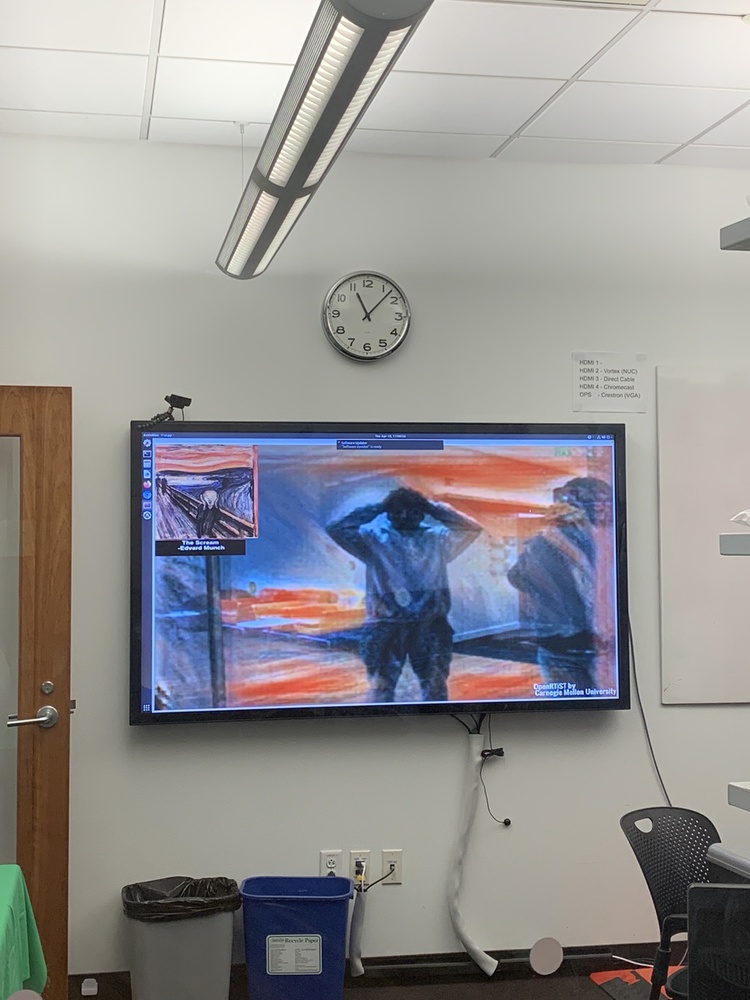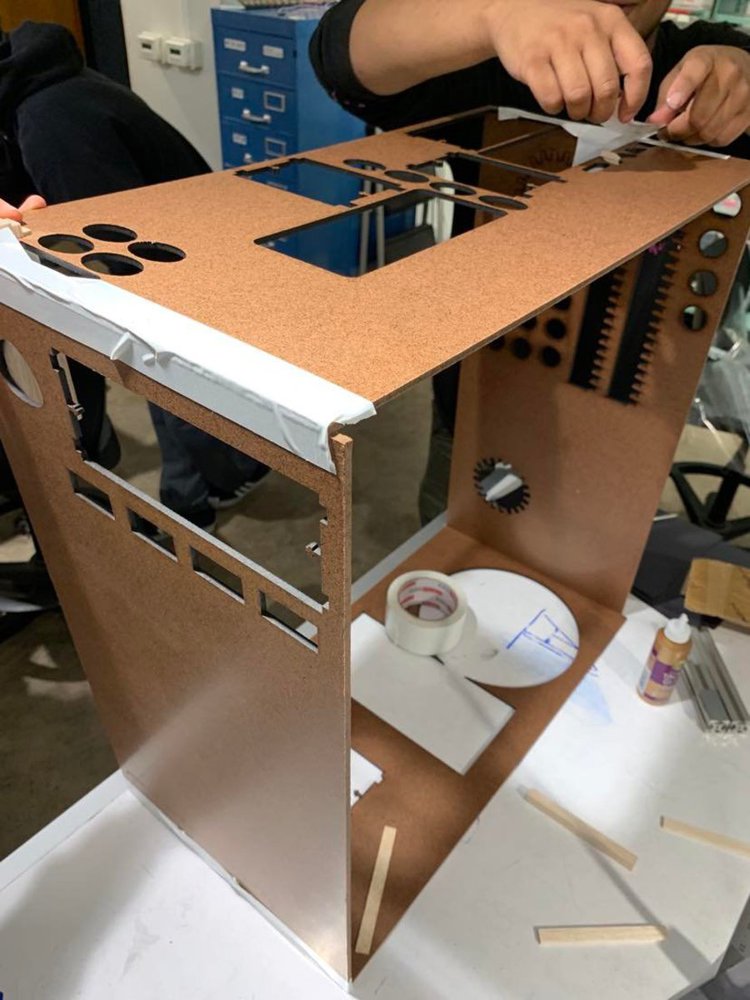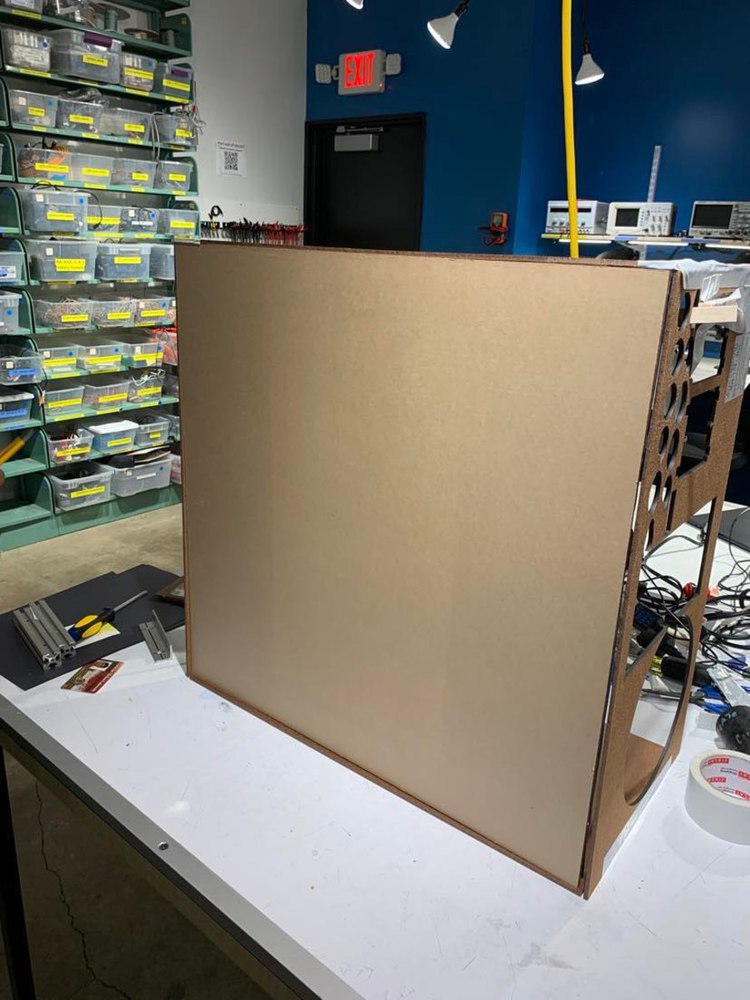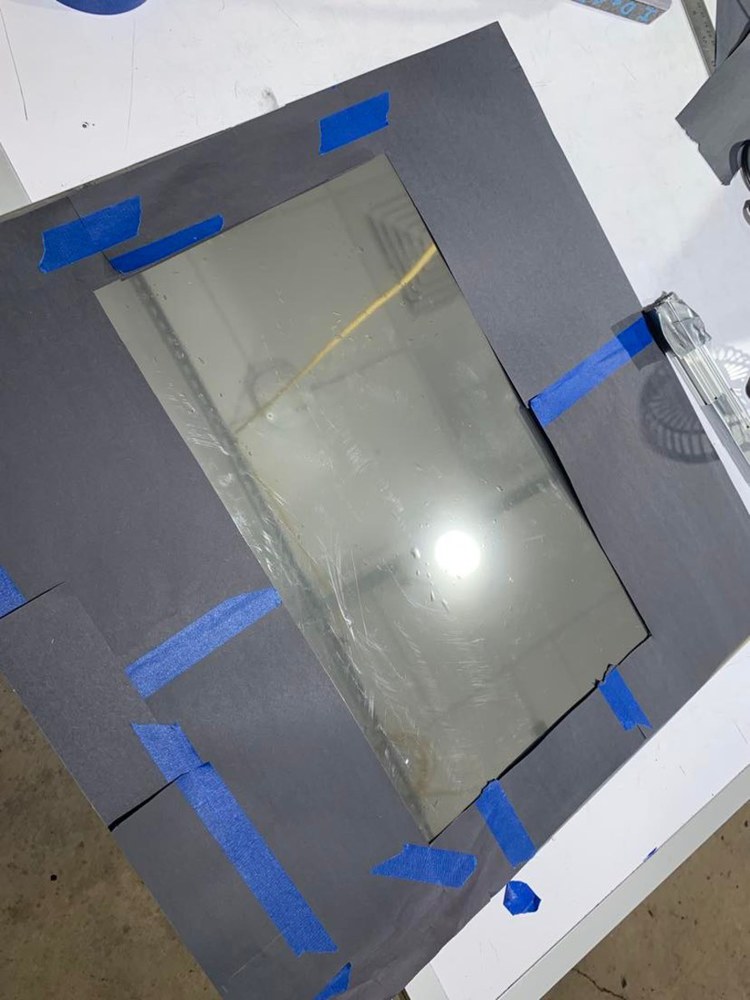Process
In our project, we began by exploring and building with the Arduino camera. We wanted to create an experience/object that would use this camera, as it tied heavily into the idea of data privacy and surveillance. We were both inspired by some of the displays around campus that used cameras to show different images of people, and we wanted to create our own spooky version.
We chose the mirror, an everyday object that people take for granted, to be our embodiment since we could deviate heavily from the normal using it. To build the mirror, we bought reflective film and an acrylic sheet so that we could make some of it purely reflective while also being able to cut it so that we could place the monitor. We created a prototype/demo frame using wood scraps so that we could house both the monitor and the mirror as well as the electrical components.
Initially, we wanted to create something that would distort the image when people come close to the mirror. We used a proximity sensor to do this with the Arduino Nano board, but we soon realized that the camera quality was not ideal for this project. As a result, we had to shift to using a Raspberry Pi and a separate camera module for it. This was challenging for us, as we had to set up the system with a short amount of time. We were able to find a library that could apply a few basic image filters (negative, gpen, cartoon, solarise, watercolour) to a live pixel data feed. However, with the short time, we had to scope down from including a proximity sensor and instead relied on manually switching to the filtered image.
A lot of this project was new to both of us. We’ve seen technology and objects like this before, but have never really worked with it although we are both interested in it. Writing the code and the basic setup of the electronics was quick, but building the actual object took more time than anticipated, leading to less advanced features for the actual prototype.




